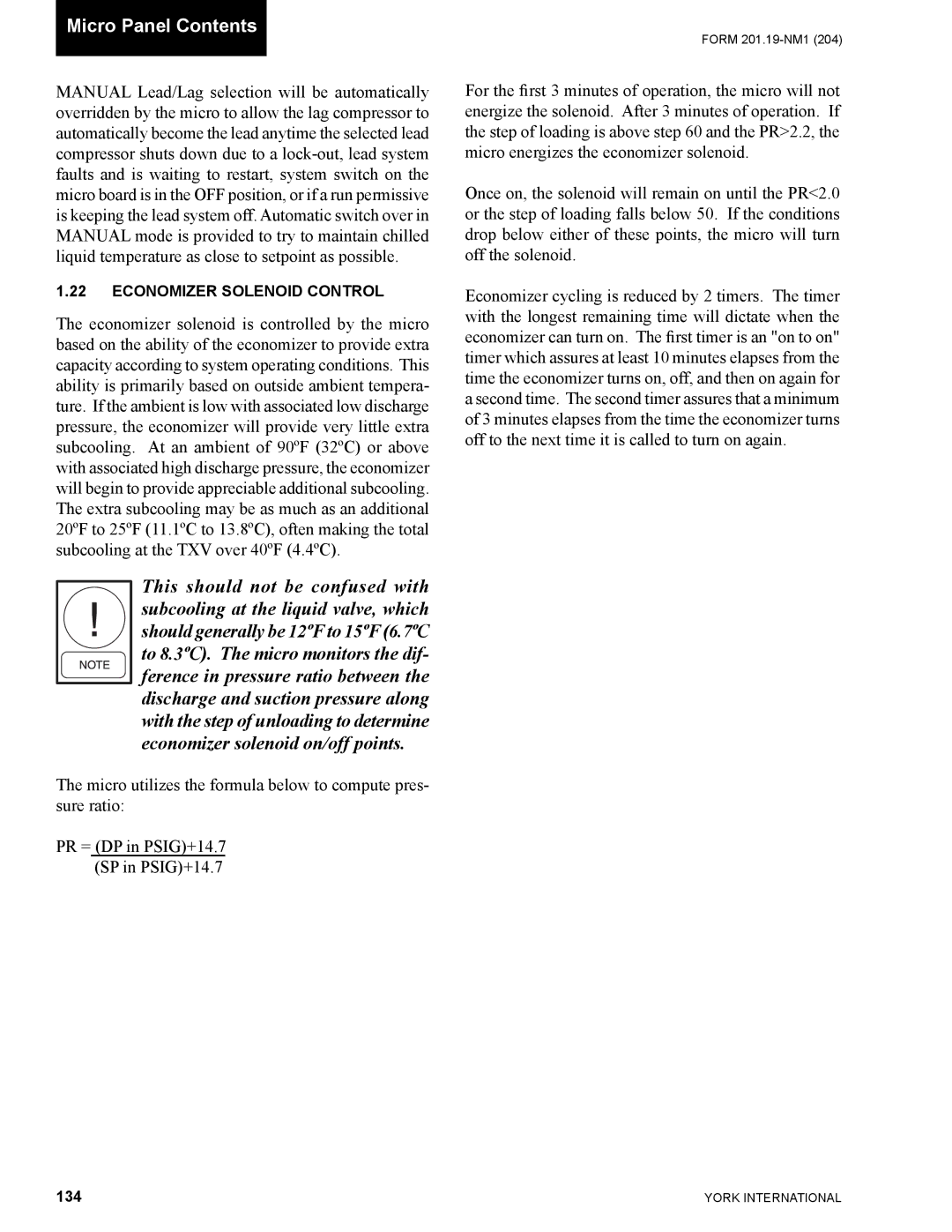
Micro Panel Contents
FORM
MANUAL Lead/Lag selection will be automatically overridden by the micro to allow the lag compressor to automatically become the lead anytime the selected lead compressor shuts down due to a
1.22ECONOMIZER SOLENOID CONTROL
The economizer solenoid is controlled by the micro based on the ability of the economizer to provide extra capacity according to system operating conditions. This ability is primarily based on outside ambient tempera- ture. If the ambient is low with associated low discharge pressure, the economizer will provide very little extra subcooling. At an ambient of 90ºF (32ºC) or above with associated high discharge pressure, the economizer will begin to provide appreciable additional subcooling. The extra subcooling may be as much as an additional 20ºF to 25ºF (11.1ºC to 13.8ºC), often making the total subcooling at the TXV over 40ºF (4.4ºC).
This should not be confused with subcooling at the liquid valve, which should generally be 12ºF to 15ºF (6.7ºC to 8.3ºC). The micro monitors the dif- ference in pressure ratio between the discharge and suction pressure along with the step of unloading to determine economizer solenoid on/off points.
The micro utilizes the formula below to compute pres- sure ratio:
PR = (DP in PSIG)+14.7
(SP in PSIG)+14.7
For the first 3 minutes of operation, the micro will not energize the solenoid. After 3 minutes of operation. If the step of loading is above step 60 and the PR>2.2, the micro energizes the economizer solenoid.
Once on, the solenoid will remain on until the PR<2.0 or the step of loading falls below 50. If the conditions drop below either of these points, the micro will turn off the solenoid.
Economizer cycling is reduced by 2 timers. The timer with the longest remaining time will dictate when the economizer can turn on. The first timer is an "on to on" timer which assures at least 10 minutes elapses from the time the economizer turns on, off, and then on again for a second time. The second timer assures that a minimum of 3 minutes elapses from the time the economizer turns off to the next time it is called to turn on again.
134 | YORK INTERNATIONAL |
